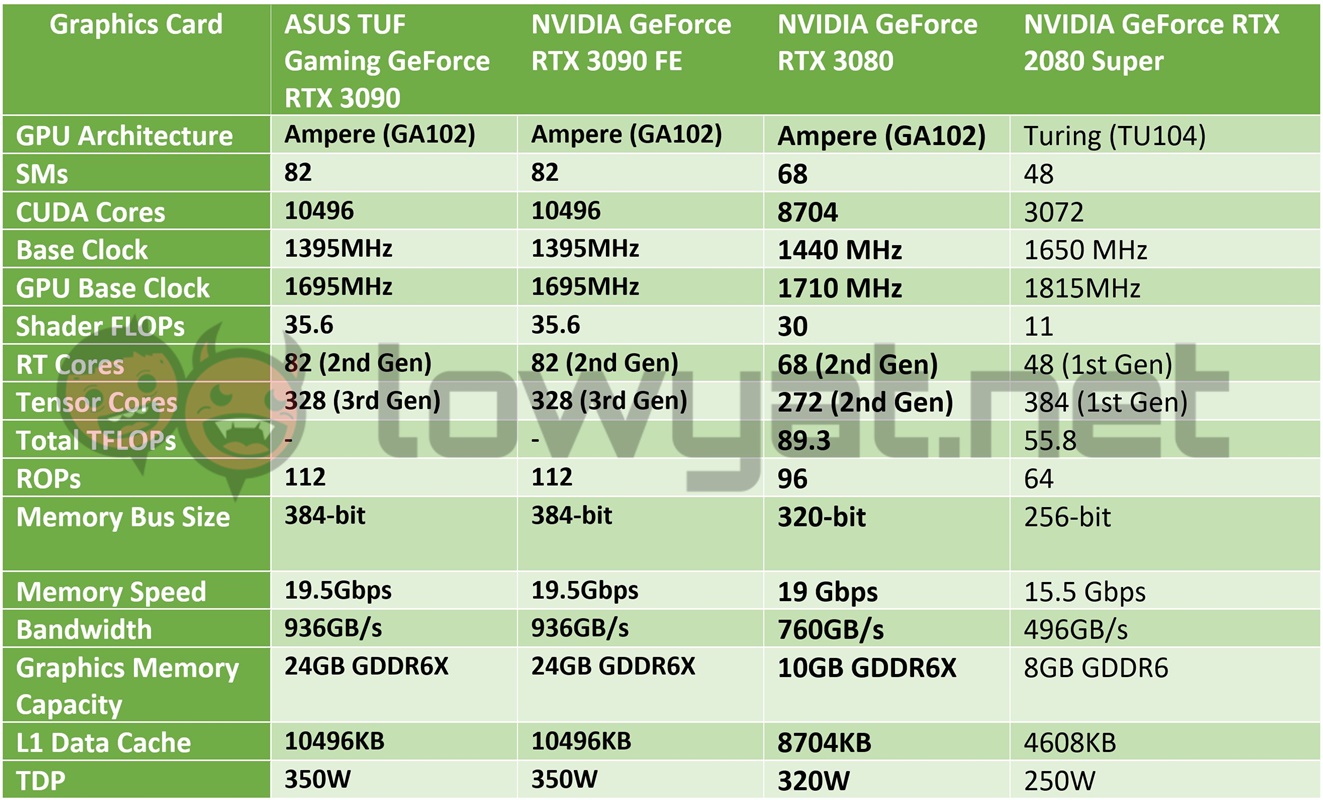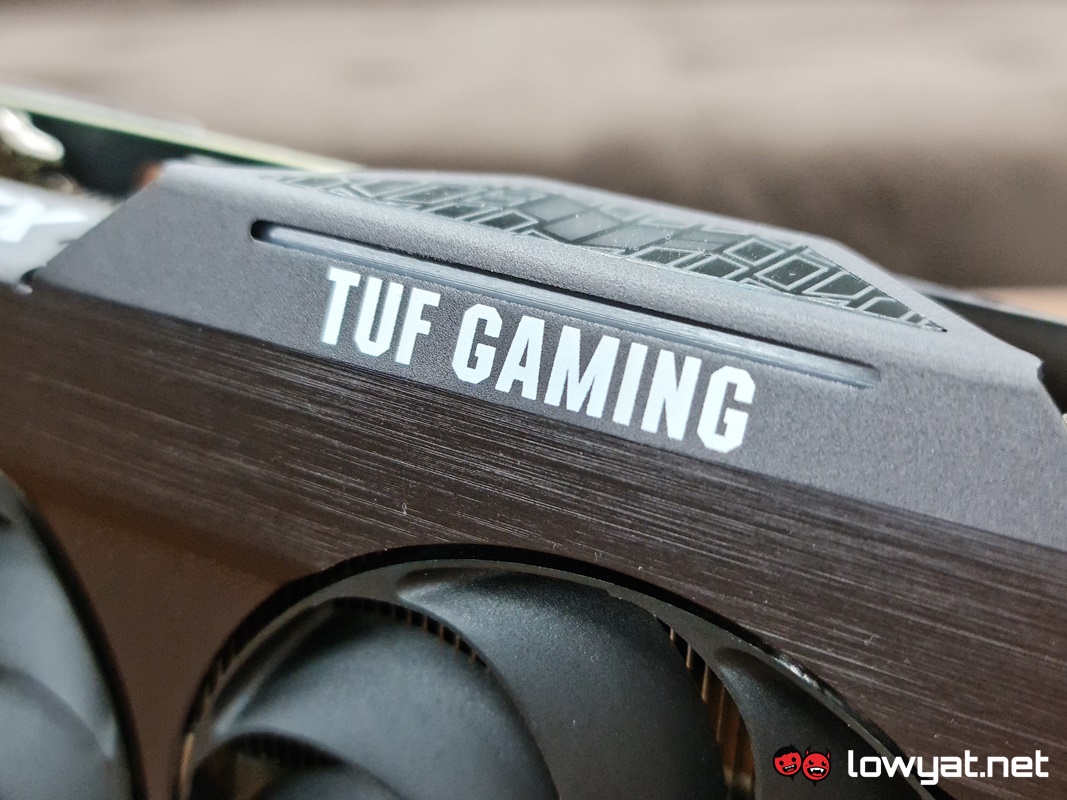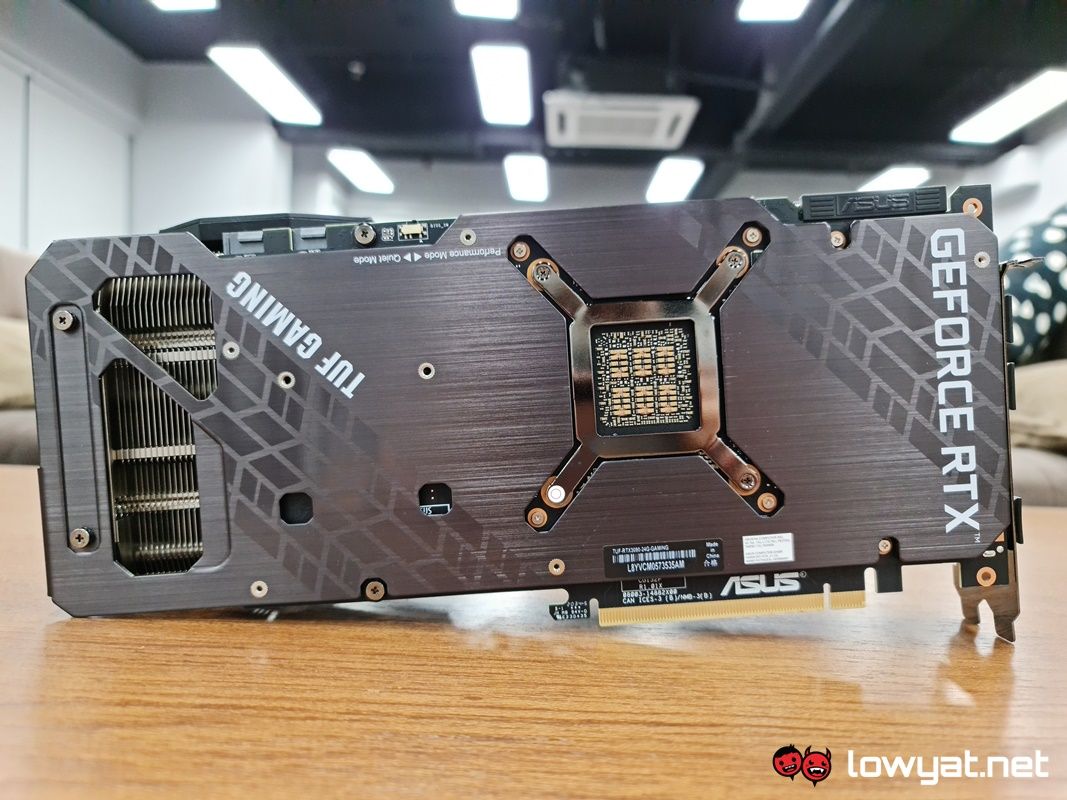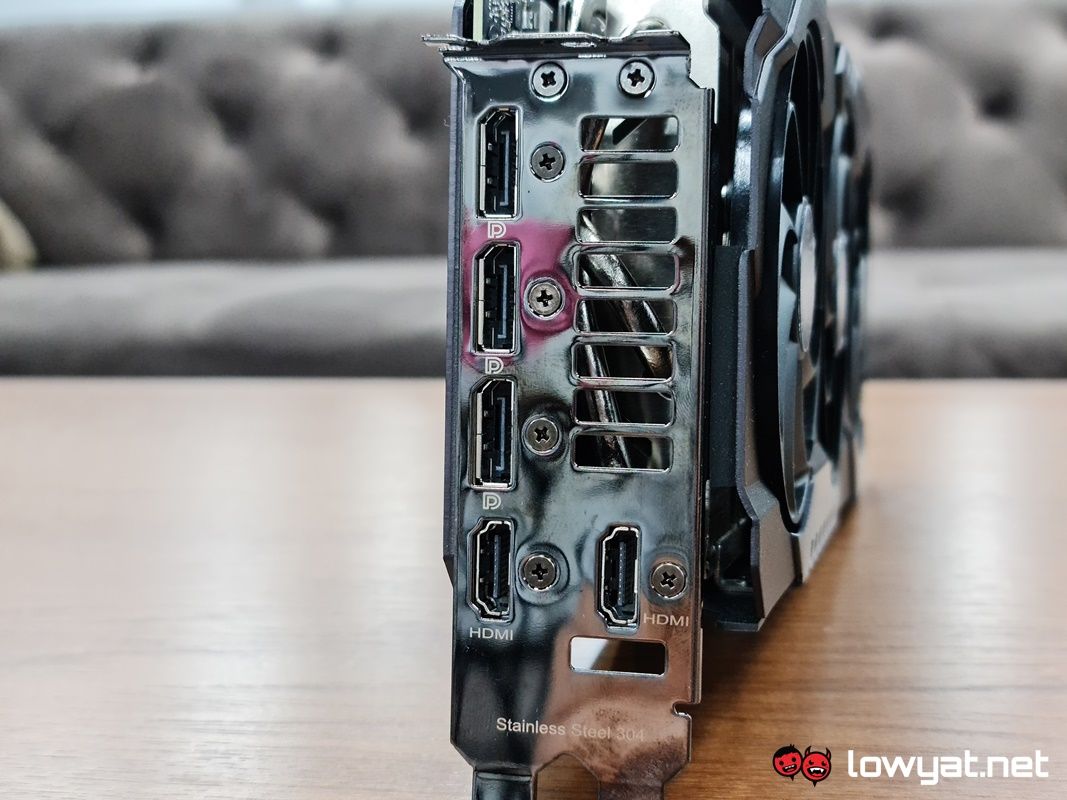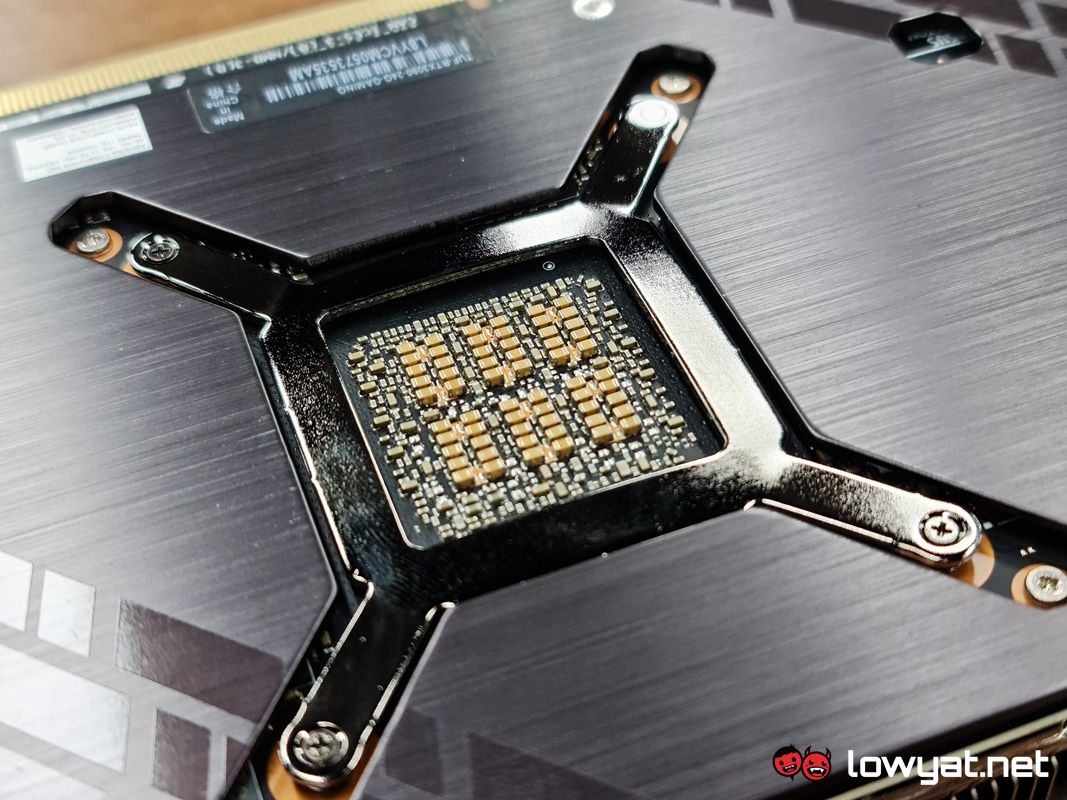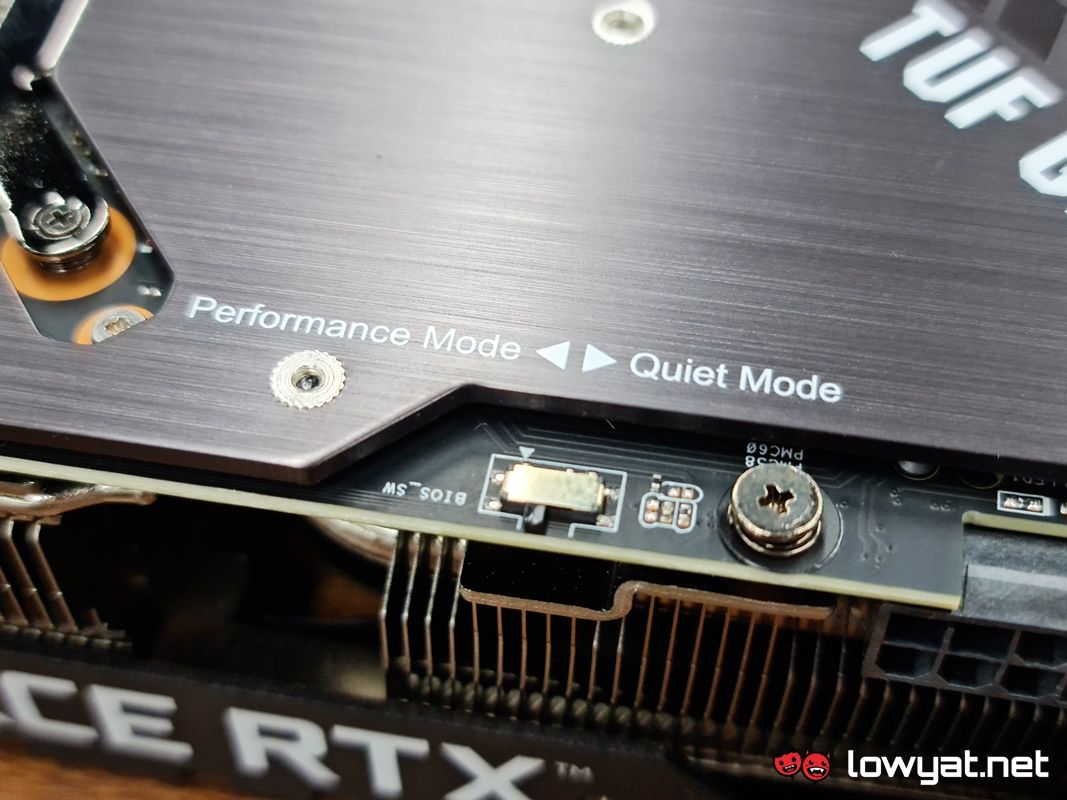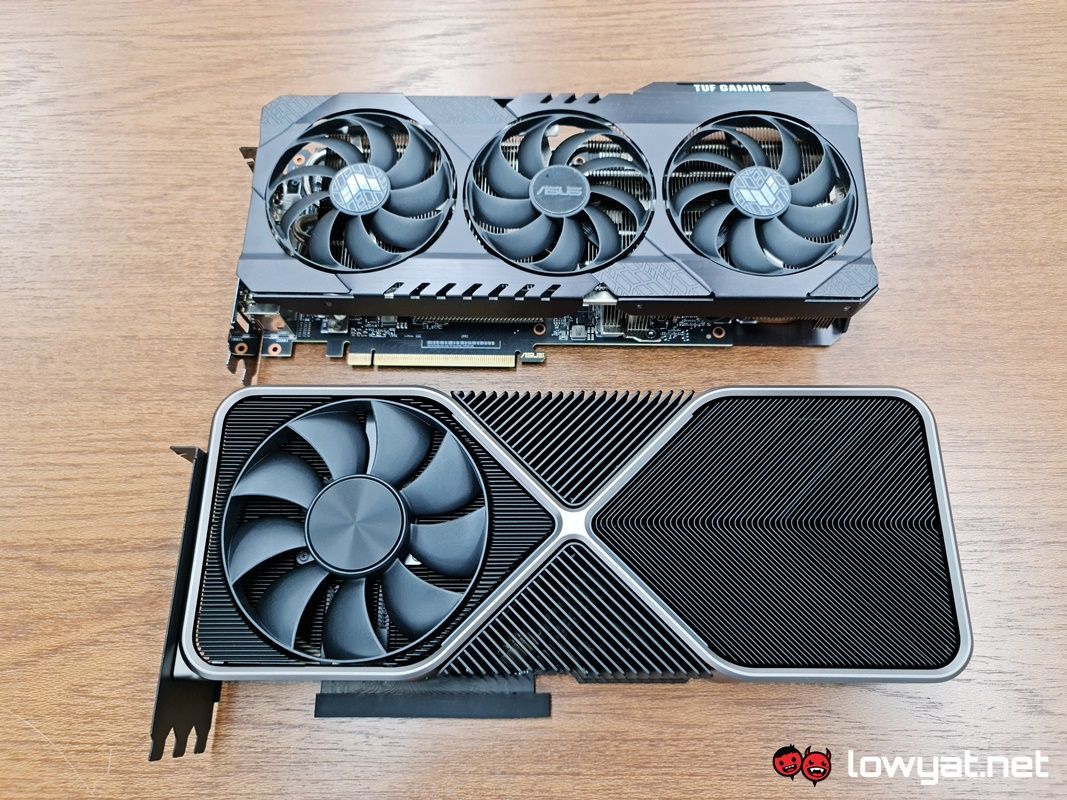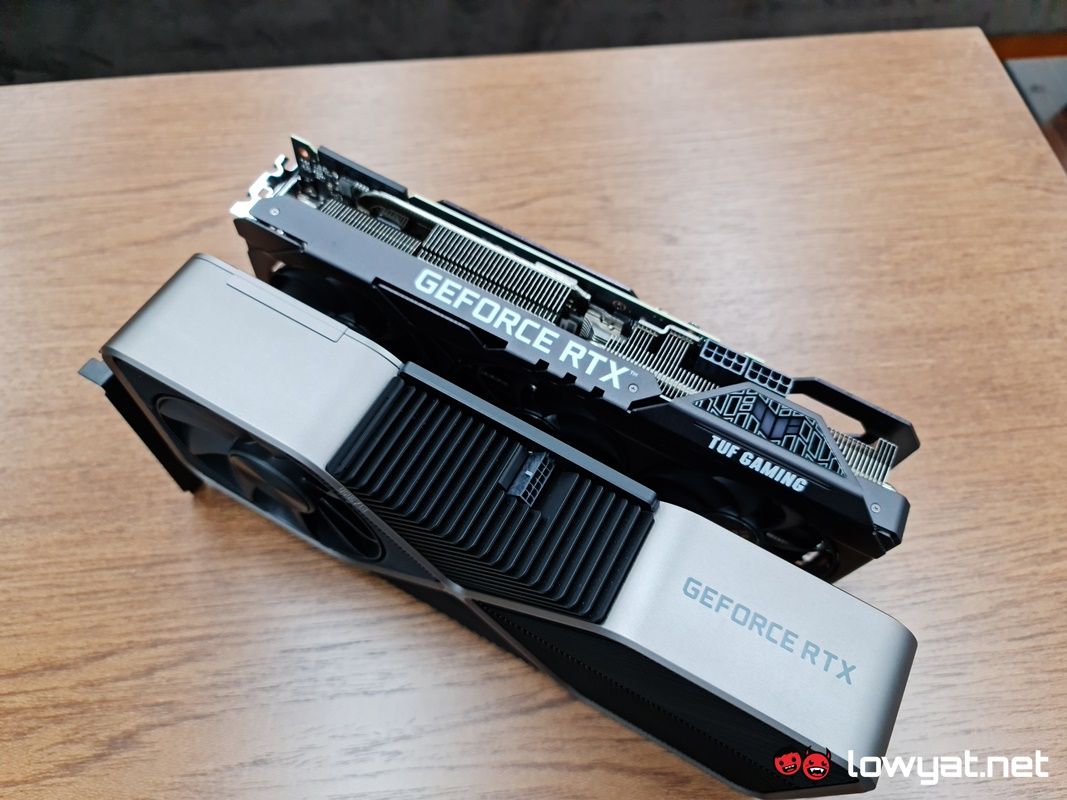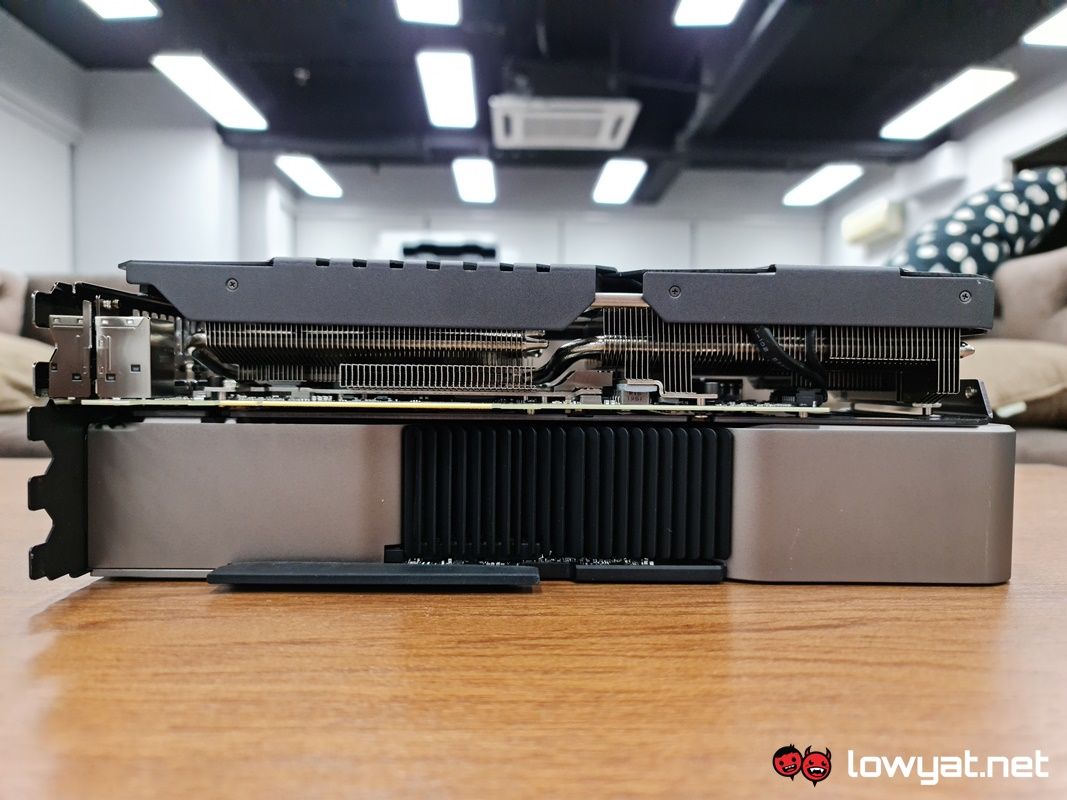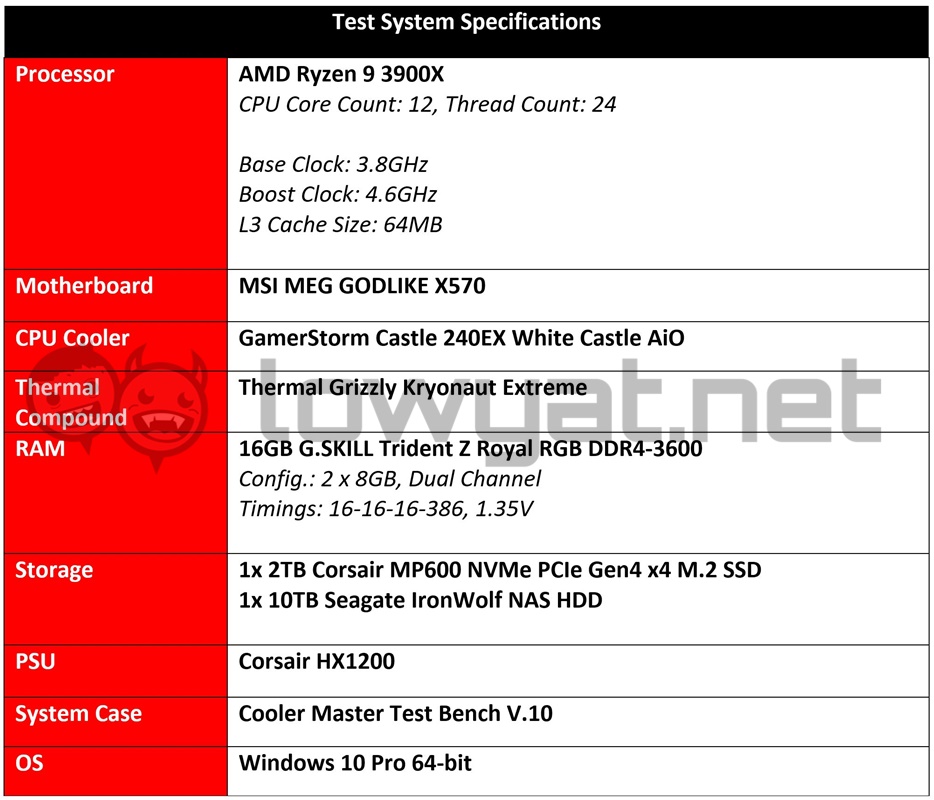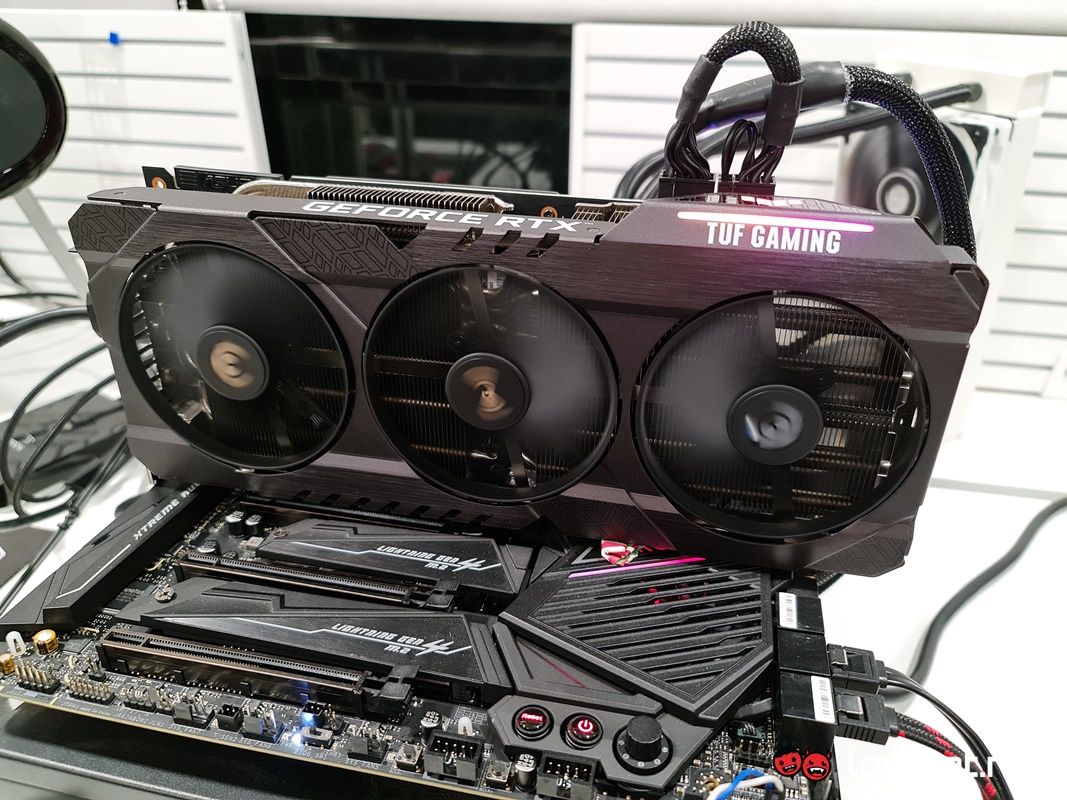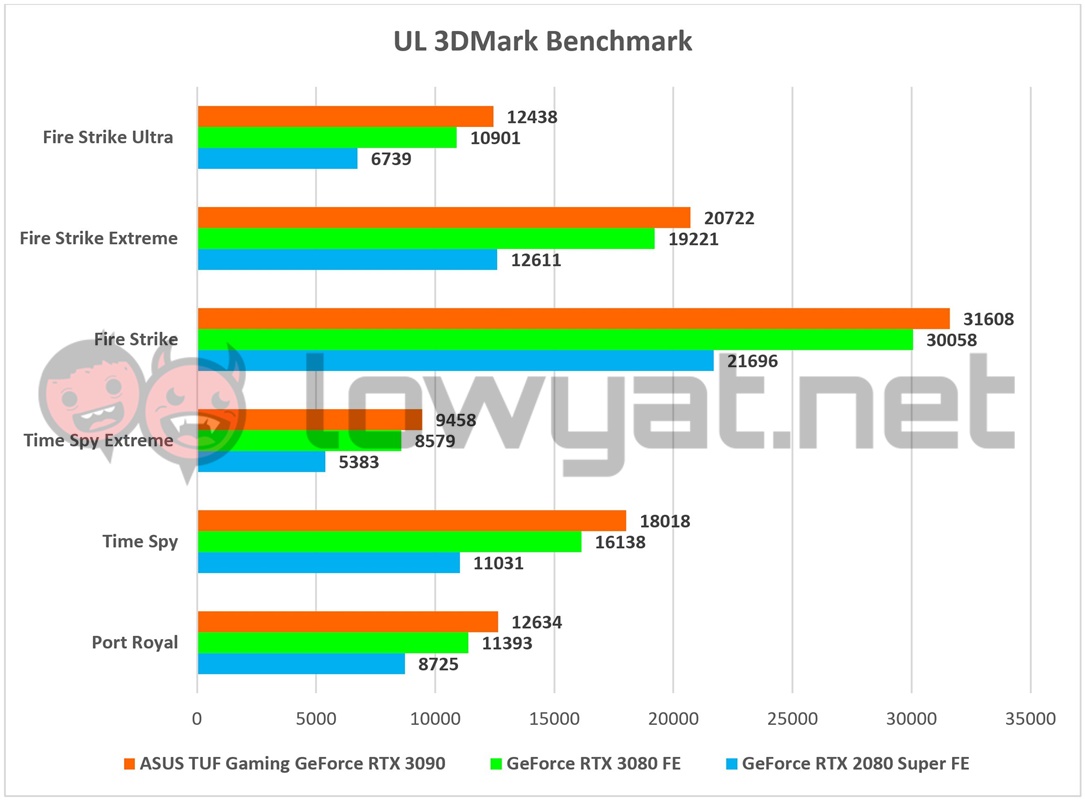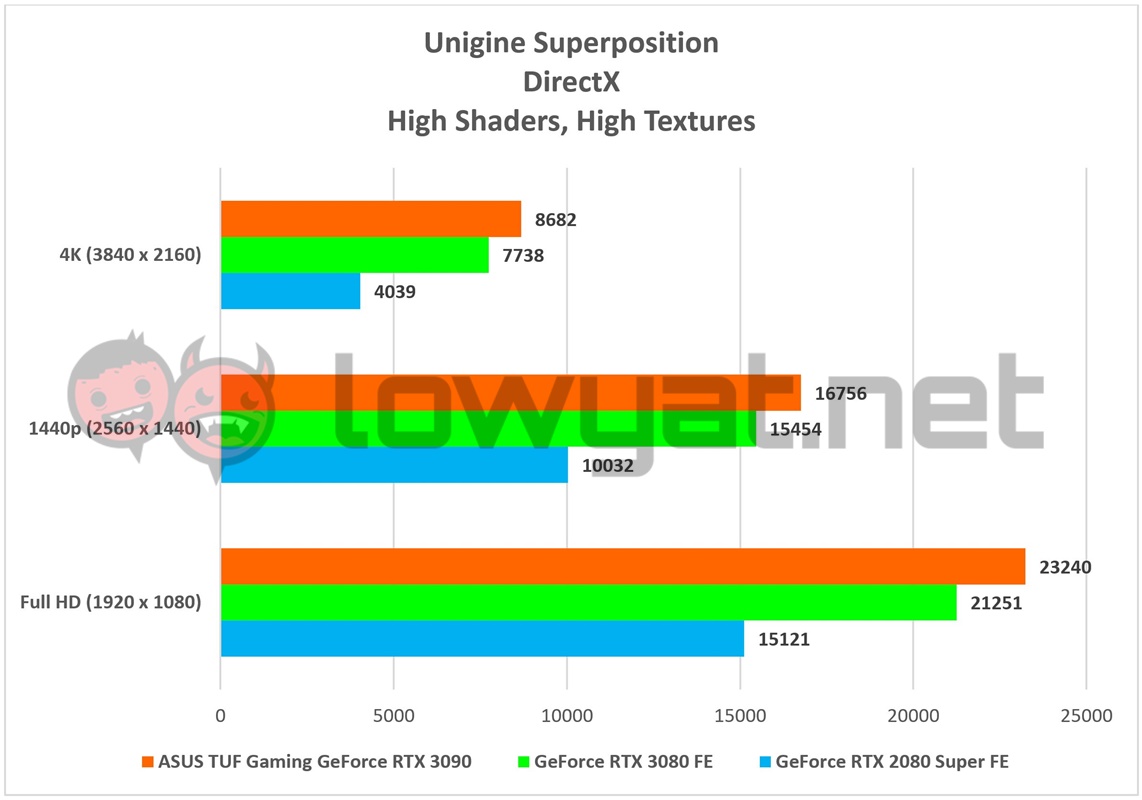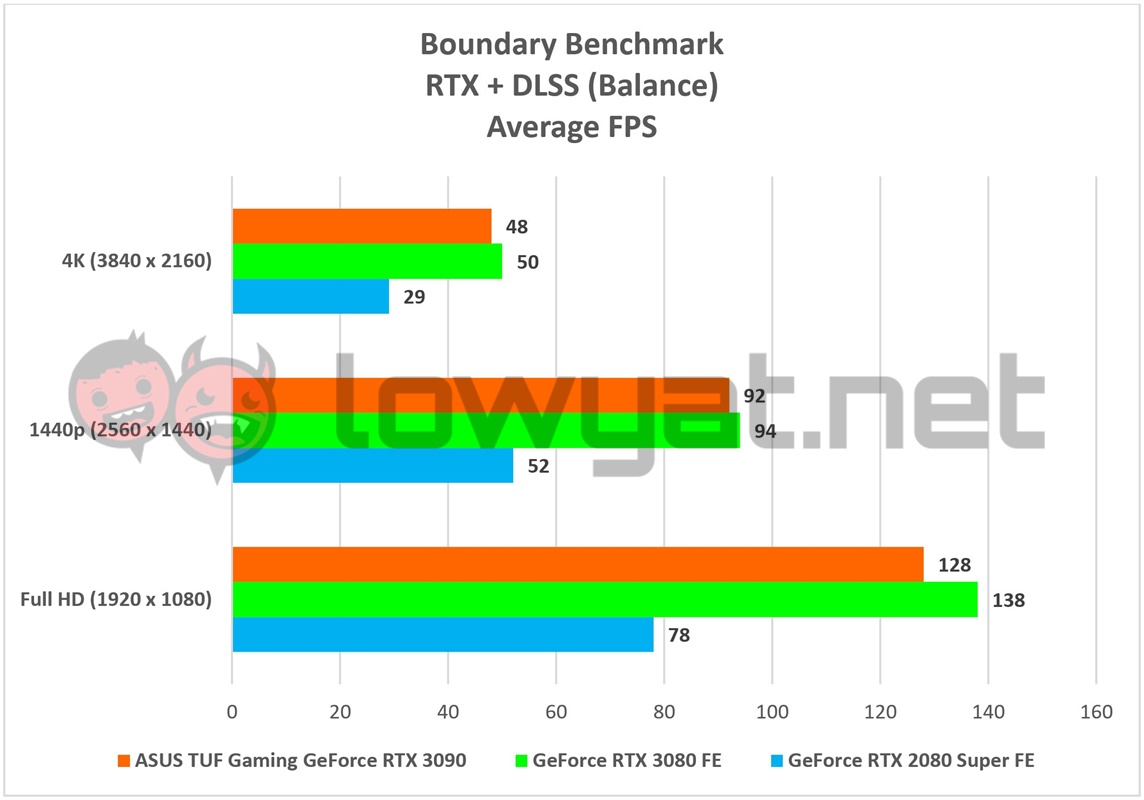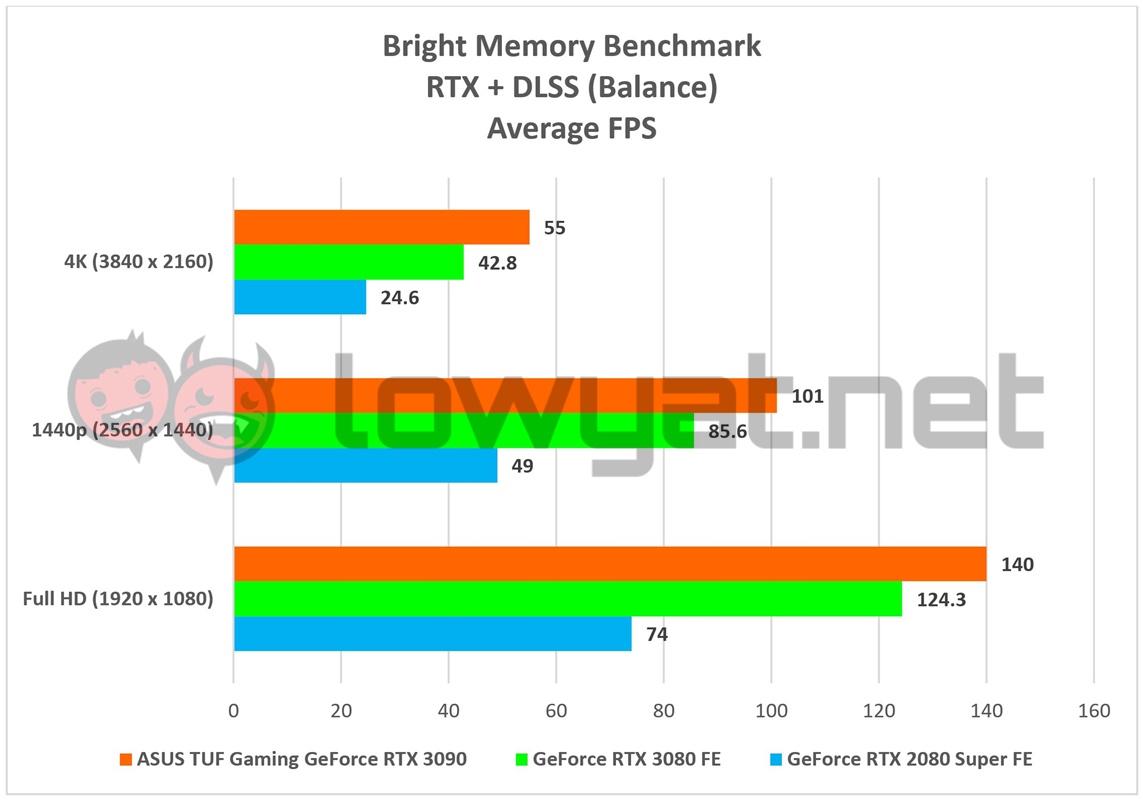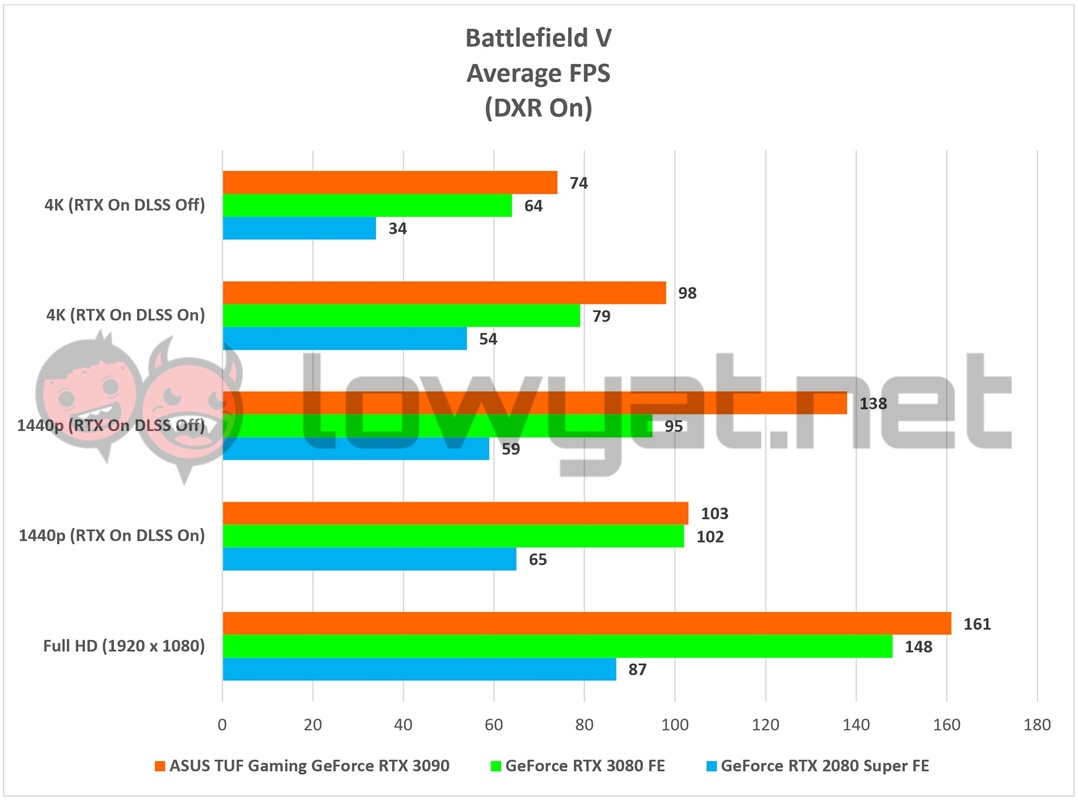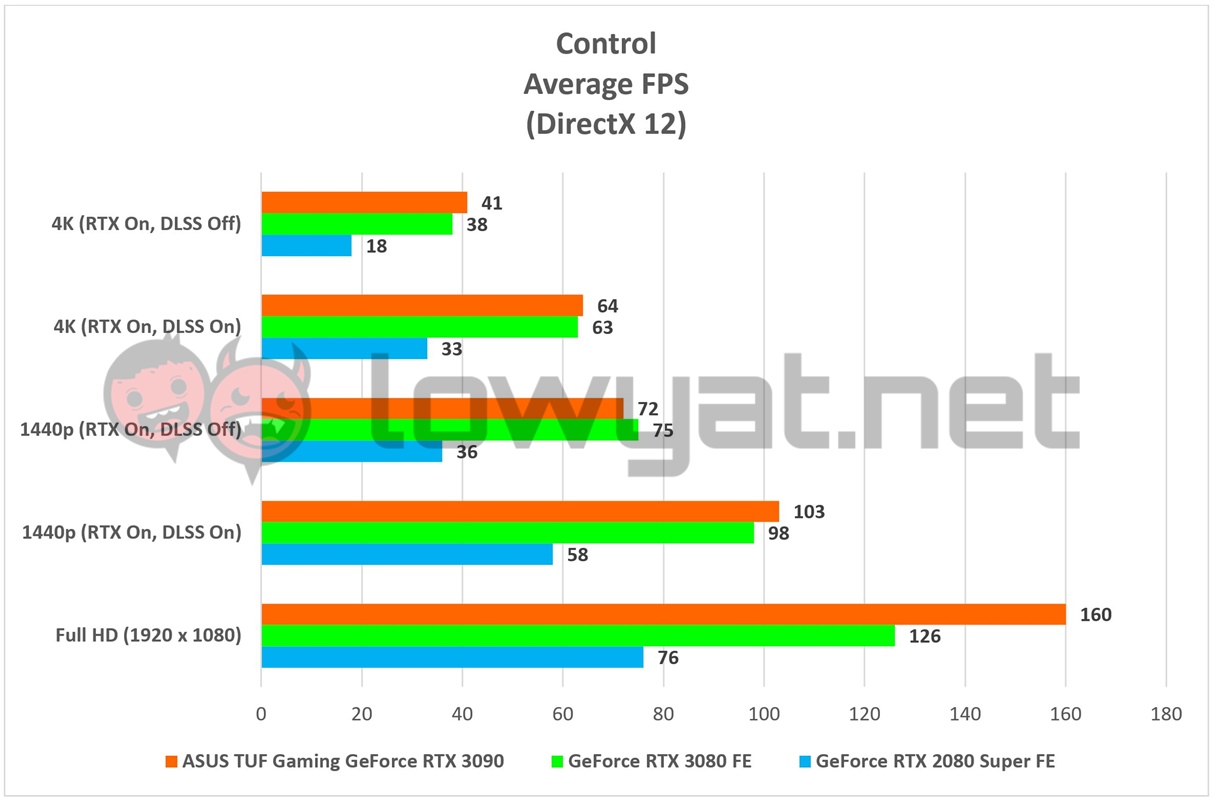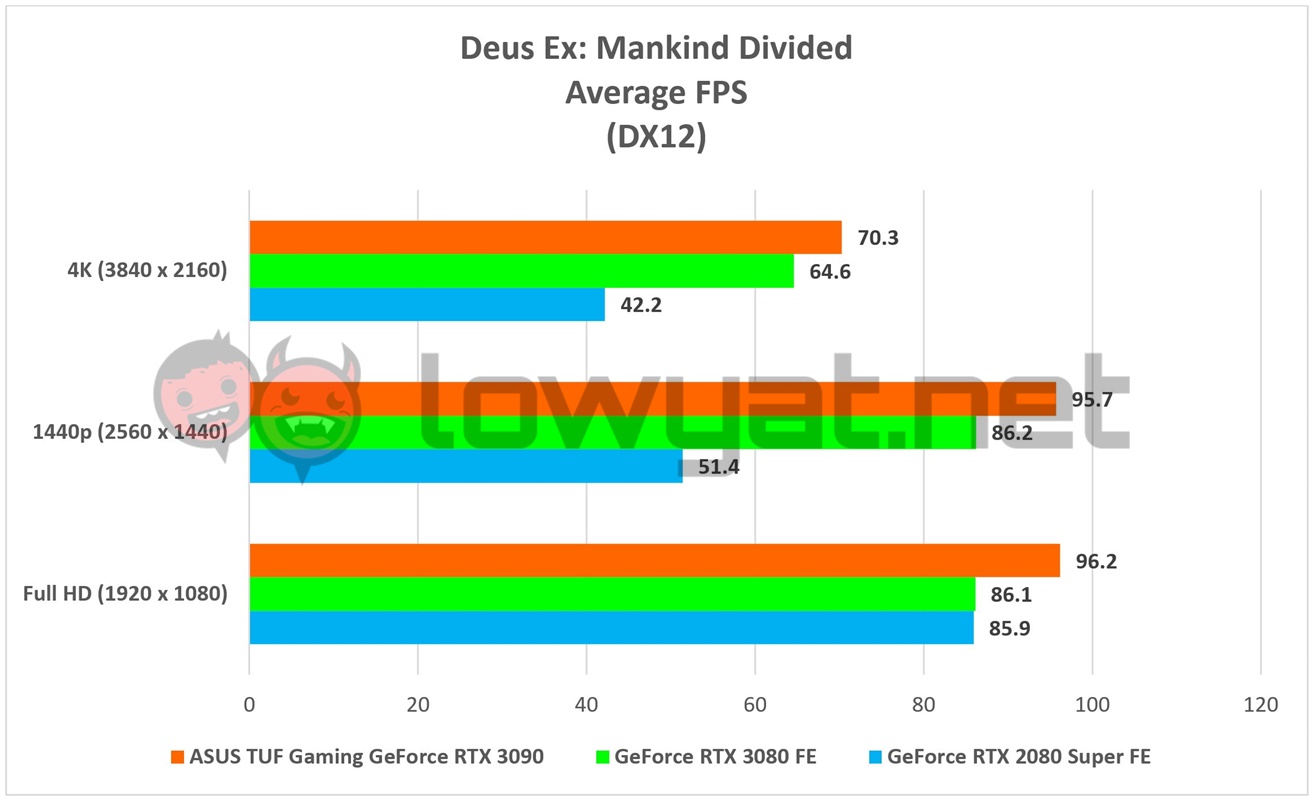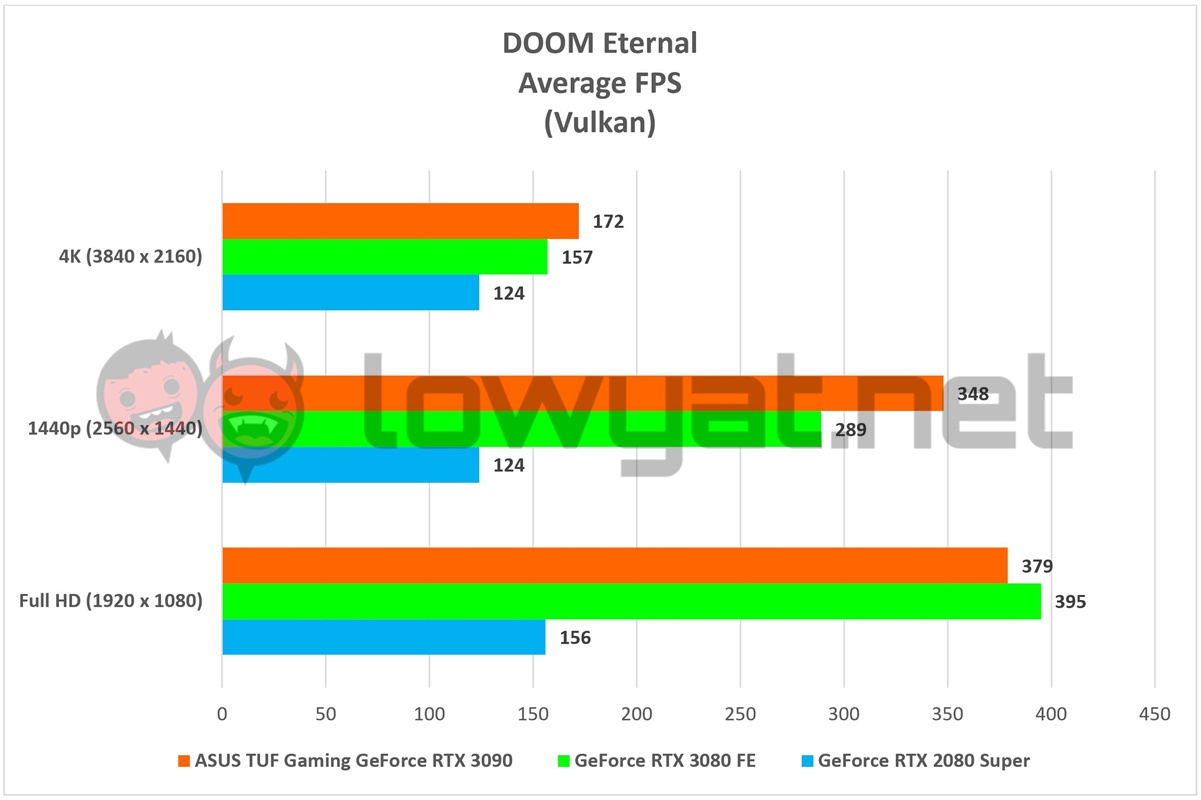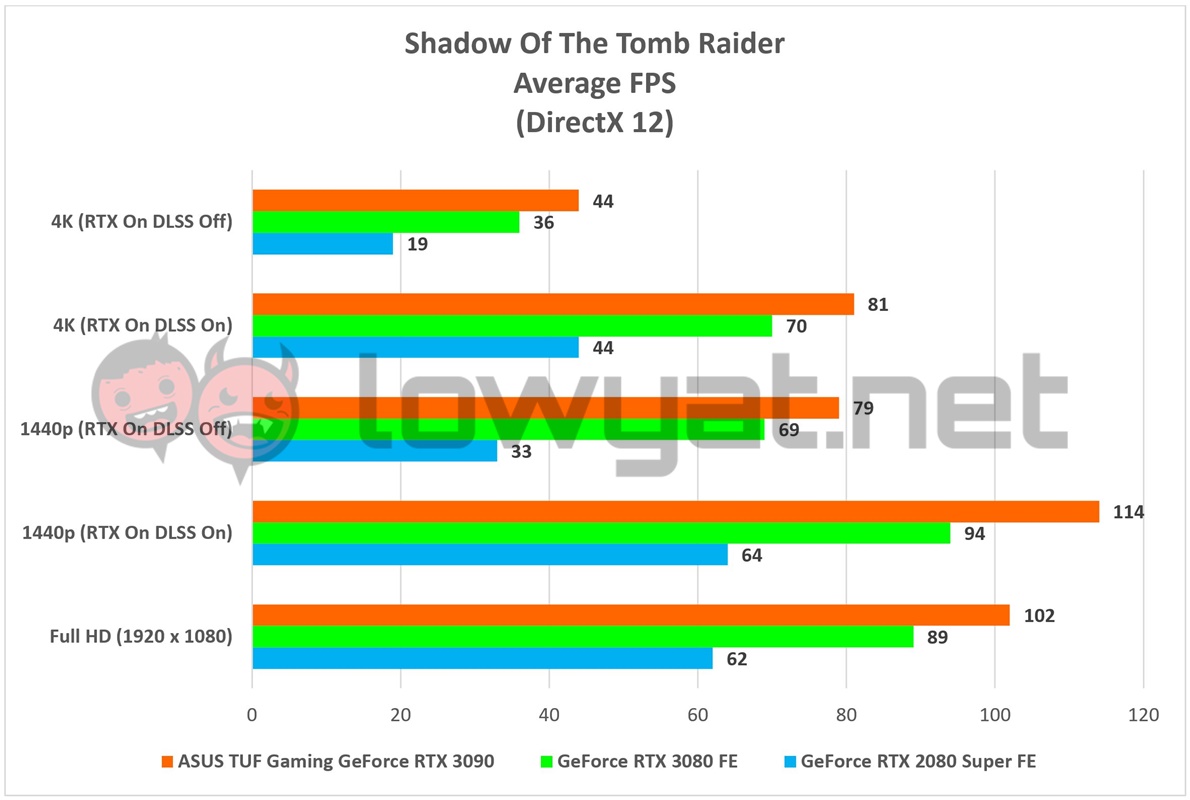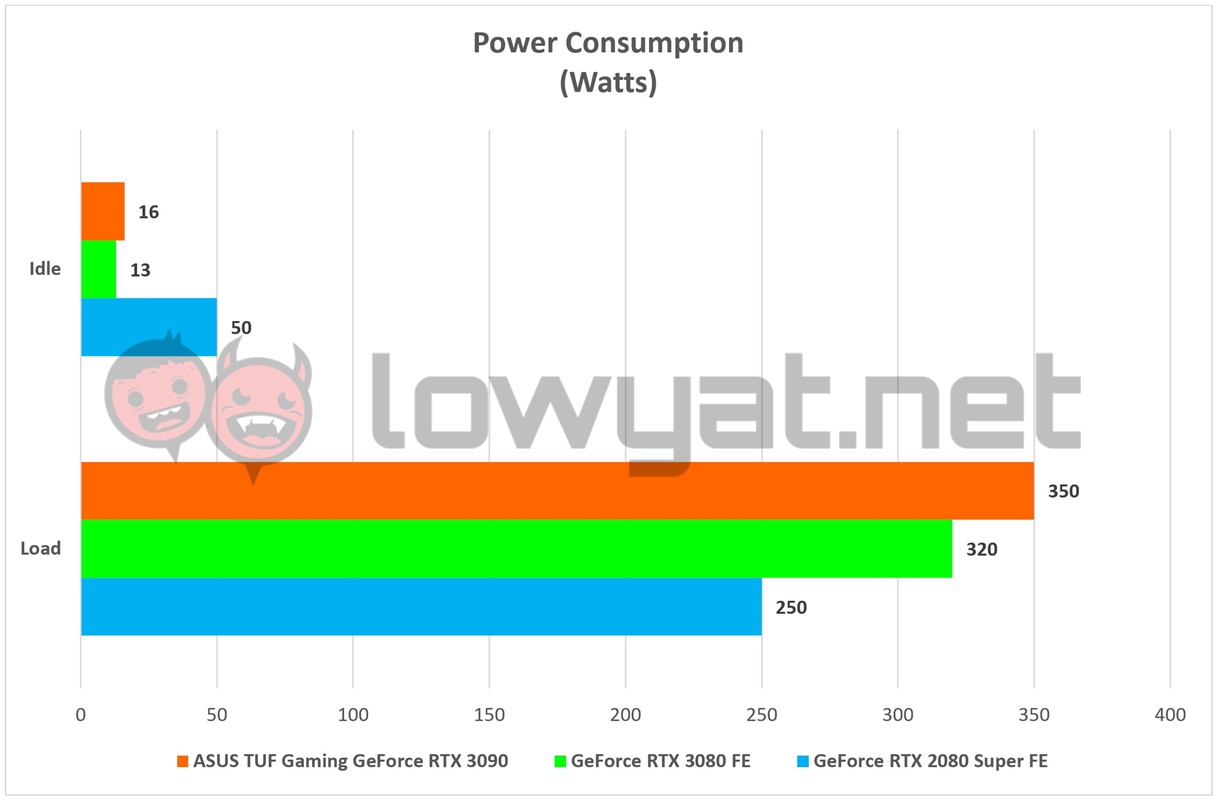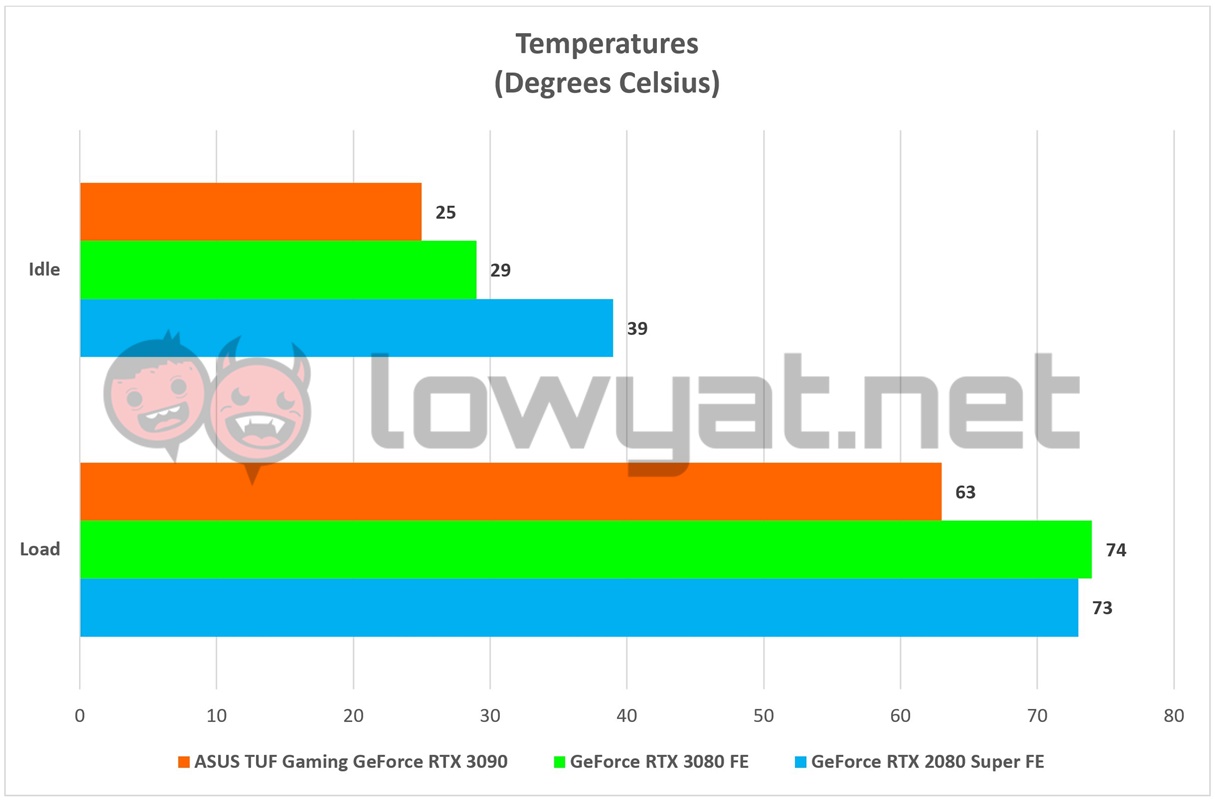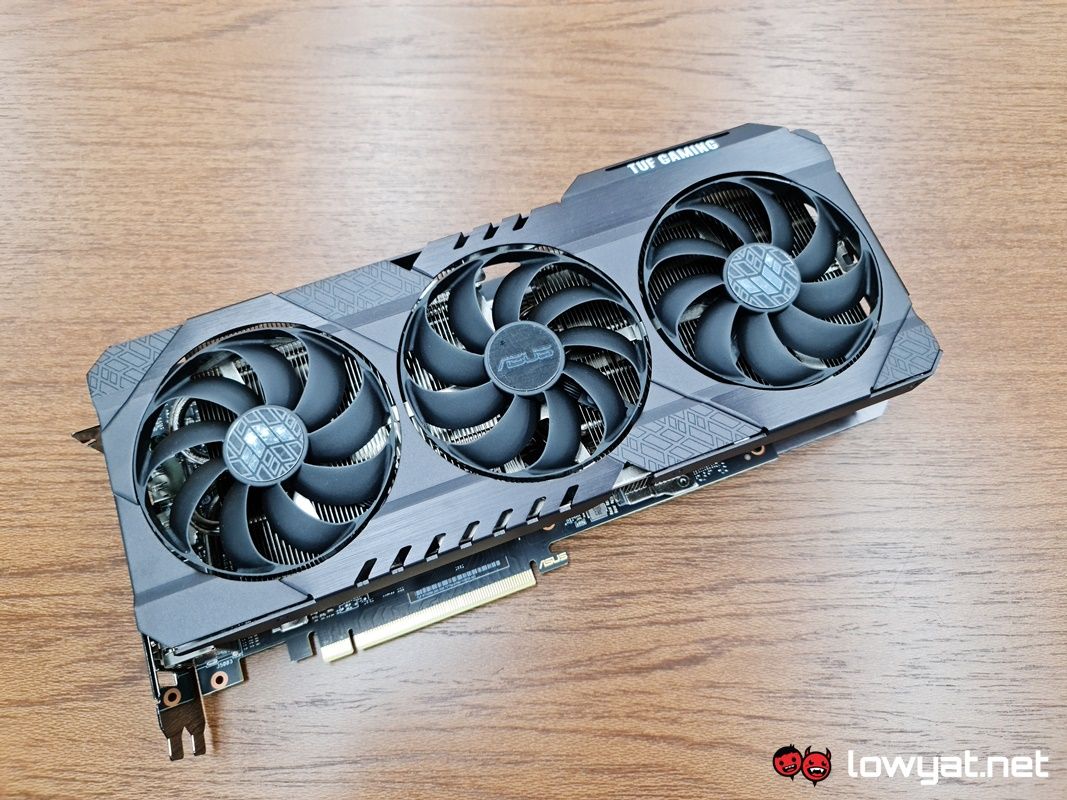While its cooling solution is an obvious far cry from NVIDIA’s own Dual Axis Flow Through design, it goes without saying that we should not discount the possible benefits that come with a third-party cooler design.
Specification
Design
The TUF Gaming’s aesthetics is something I have come to expect from ASUS; it has that rugged feel to it, but at the same, it’s trying to tell the world that, despite its rugged militaristic look, it also wants to look good in whatever casing it’s installed in. On a related note, the GPU-exposed backplate looks nice; it doesn’t feature over-the-top vinyl, but its numerous cutout does add to its aesthetics. That, and the obvious fact that it adds rigidity to the card’s structure. As for the size of the card, I don’t think you’d find it surprising when I tell you it is smaller than the Founders Edition of the RTX 3090; for all the metal that’s attached to the “custom reference” PCB, it’s still dwarfed by the sheer size and weight of NVIDIA’s own card.
Just like the majority of high-end, custom graphics cards in today’s market, the TUF Gaming RTX 3090 keeps itself cool with the help of three axial-tech fans that ASUS says uses an improved design. That helps them channel airflow through the card more efficiently through higher air pressure. Another trend that seems to be popular is having one fan spinning clockwise, while the other two spin in the opposite direction. Also, If you’ve been following the current hullabaloo about the different capacitors used by NVIDIA’s AiB partner, you’ll also know that ASUS may have seemingly dodged the bullet on the issue by fitting all its cards with MLCC capacitors. Instead of using a hybrid design with POSCAPs.
On a side note, the TUF Gaming RTX 3090 is nearly devoid of any RGB LEDs, save for the little strip at the tail end of the card that highlights the lineup’s name. Oh, and like all 3rd party RTX 30 series cards, this one uses a dual 8-pin PCIe power port configuration, and not NVIDIA’s proprietary 12-pin PCIe power port.
Testbench
Benchmarks
One thing I need to make clear is that I am testing the TUF Gaming RTX 3090 without the NVIDIA’s most recent Game Ready drivers for two reasons. The first reason is that, prior to the stability issues that were reportedly plaguing GeForce RTX 30 series cards, this card presented no issue in its performance. The second reason is that I had already completed and gathered data from the benchmarks I use. If you’re looking for a third reason, it would be ASUS’ decision to install six MLCCs on the card, but frankly speaking, I’m not an electrical engineer and there’s certainly more to the whole issue than just the capacitor’s quality.
Since I’m looking at the TUF Gaming RTX 3090 from a gamer’s standpoint, the benchmarks I’m using include the usual suspects. For synthetic benchmarks, I use UL’s 3DMark and Unigine’s Superposition, as well as the Boundary and Bright Memory tests for DLSS comparison. The games I use to test for real-world performance are Battlefield V (BFV), Deus Ex: Mankind Divided (DXMD), DOOM Eternal, Shadow of the Tomb Raider, and Control for slightly more comprehensive DLSS benchmark testing.
Putting it through its paces, we can see that the TUF Gaming RTX 3090 definitely pulls ahead of the RTX 3080, but not by a huge gap. At best, the card is at least 2000 points ahead of its sibling in one of the synthetic tests. There’s also a noticeable difference with in-game performance, but again, the margin between the TUF Gaming RTX 3090 and the RTX 3080 is minimal. In DOOM Eternal, I noticed an average increase between 20 and 35 fps at 4K resolution, while the framerates at 1440p and Full HD are indistinguishable. Likewise, in games like Control where NVIDIA’s DLSS technology plays a crucial factor, the card seems to only be able to churn out only a few extra frames across the board.
And before you ask: yes, the TUF Gaming RTX 3090 is capable of running at 8K resolution, but at the time of writing, I still do not have the HDMI 2.1 cable to use with the only TV capable of such resolution. For that matter, I’ll post charts of the card’s performance at 8K resolution via the RTX 3090 Founders Edition, and once I’ve received said cable.
Temperature and Power Consumption
When I began testing the TUF Gaming RTX 3090, I was already expecting its power consumption to be considerably higher than the RTX 3080. After all, NVIDIA says that the card’s TDP is about 30W higher than its sibling at 350W and as a whole, my test bench pulls nearly 600W of power whenever I put the card to work.
What is surprising, however, is that the temperature of the TUF Gaming RTX 3090 never actually rose past 64°C. This trend stayed its course throughout the duration of the review, and when not being made to run arduous tasks, its idling temperature hovers between 33°C and 40°C.
Conclusion
I don’t believe I need to tell you just how powerful NVIDIA’s GeForce RTX 3090 is, let alone ASUS’ TUF Gaming iteration, really is. The card was designed to be an all-purpose consumer-ready version of the GPU maker’s TITAN lineup, and seeing its performance metrics in gaming, it is understandable why NVIDIA’s target market for this card are content creators, professional animators, and graphics artists. The ASUS TUF Gaming GeForce RTX 3090 thus finds itself in a rather odd place in the PC realm: at RM7208, it’s significantly more expensive than an RTX 3080, and its performance on the gaming spectrum is not that far off from its sibling. On the other hand, it is currently the only GeForce RTX 30 series card capable of multi-GPU configuration, should the need one day arise that you wish to double the power of this absurd graphics card via SLI. That, or you simply just want bragging rights for owning NVIDIA’s most powerful card to date.
